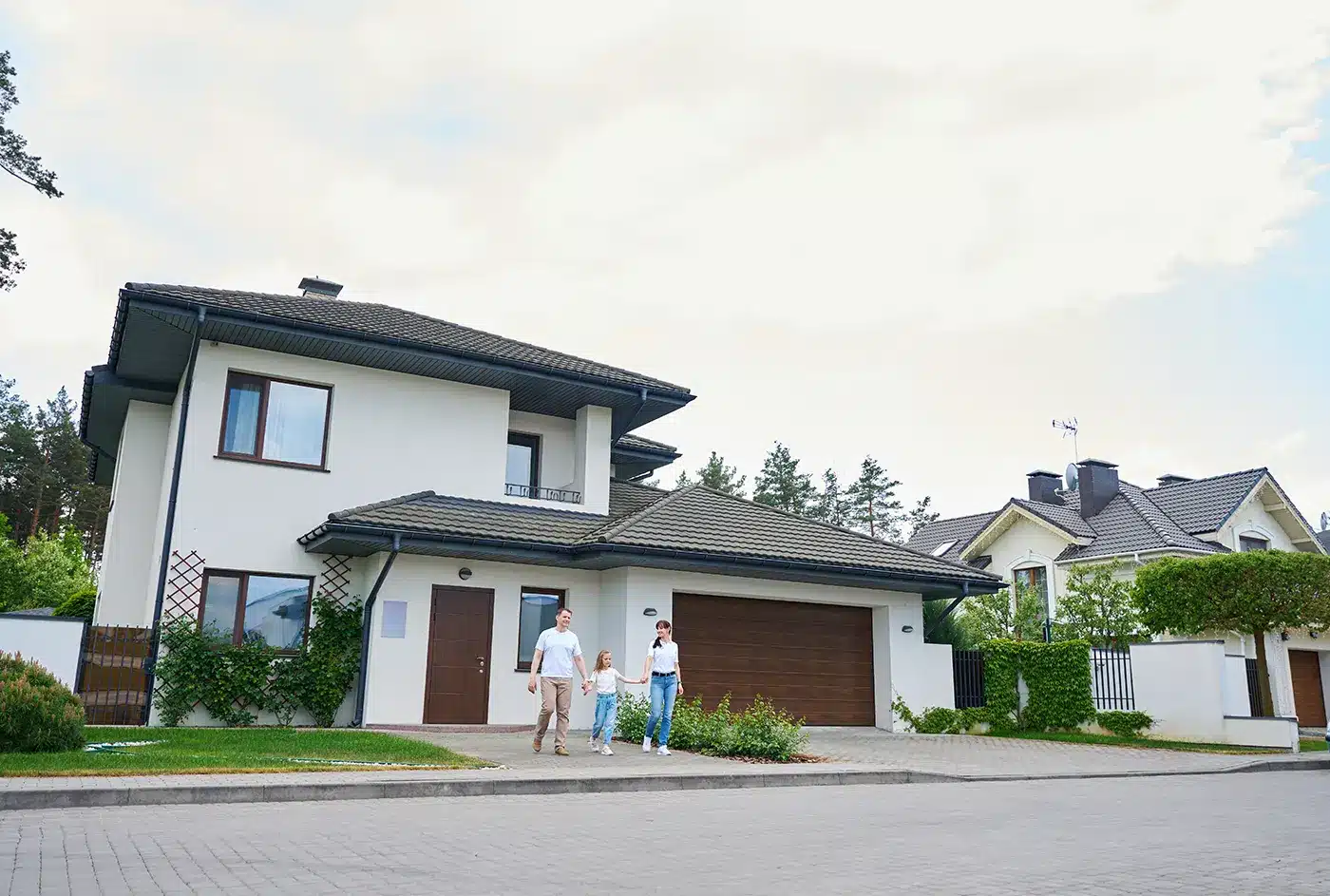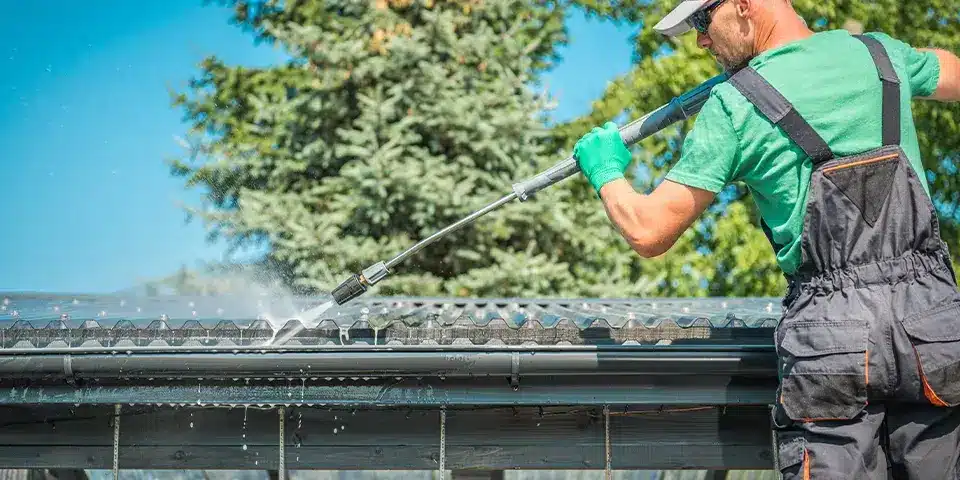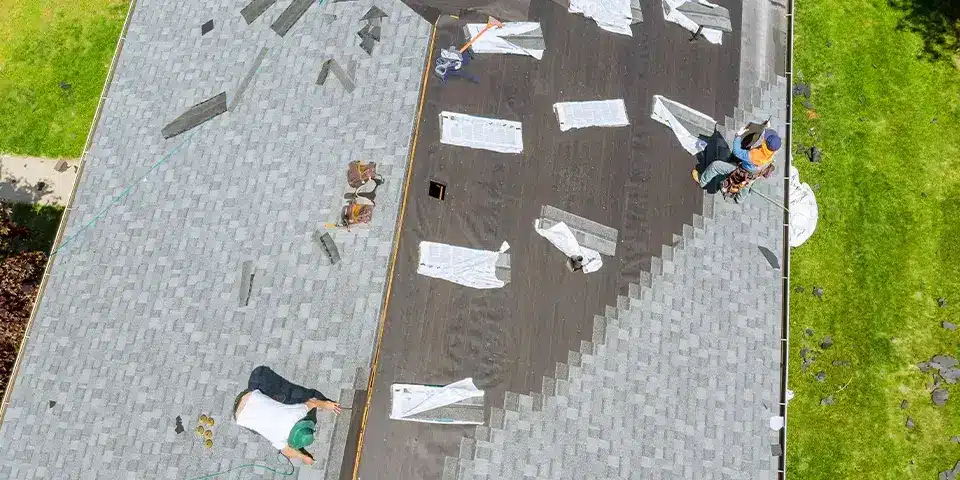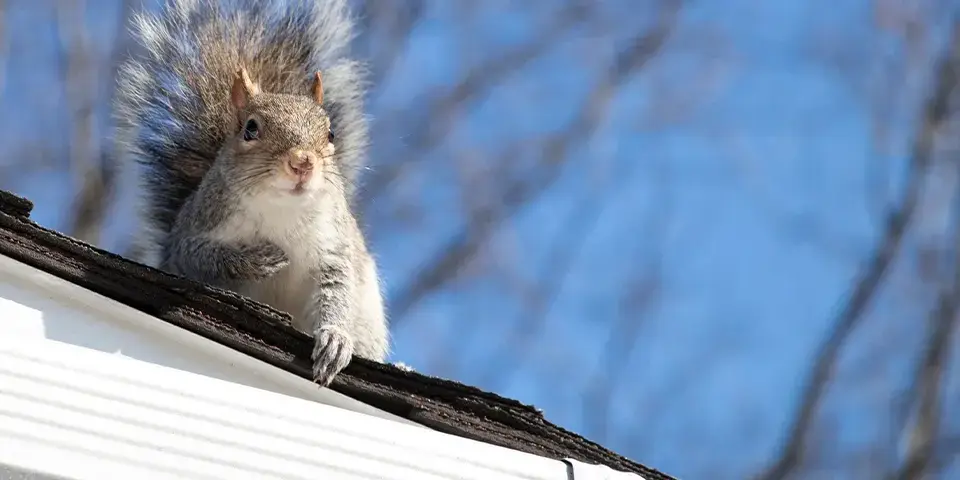
7 Ways to Keep Animals Off of Your Roof
March 19, 2025
Top 7 Roofing Companies in Kelowna
May 14, 2025
When you think of your roof, you probably think of things like shingles, gutters, or the durability of your roof. However, roof ventilation is usually not the first thing to come to mind, even though it is a crucial aspect needed to keep your home comfortable and energy efficient. A roof that isn’t properly ventilated can lead to hot air buildup, moisture problems, and higher energy costs. It might sound like a minor detail, but roof ventilation has a significant impact on your home’s overall health and efficiency.
What is Roof Ventilation?
At its core, roof ventilation is all about allowing air to move freely through your attic space. It works by using a combination of intake and exhaust vents to create a balanced flow of air. As warm air rises and accumulates at the top of your attic, it needs a way to escape. That’s where exhaust vents come in. Meanwhile, soffit vents or other intake vents let cool air in from below. This constant circulation of air in the attic helps to stop excessive heat buildup and moisture problems.
There are a few types of ventilation systems you can choose from, depending on your roof’s design and your climate. Passive ventilation is a natural approach that uses ridge vents, soffit vents, and other roof vents to allow air to move without any mechanical help. On the other hand, powered vents (like turbine vents or attic fans) can help increase airflow, particularly in areas where passive ventilation might not be enough.
The Role of Roof Ventilation in Home Efficiency
Temperature Control
A key reason to invest in a quality roof ventilation system is temperature control. Without proper ventilation, hot air can become trapped in your attic, causing your home to feel warmer than necessary. In the summer, this results in an uncomfortably hot attic and puts extra strain on your cooling system. Conversely, during the winter, warm air can escape, forcing your heating system to work harder to keep a comfortable temperature. A well-designed roof ventilation system ensures proper airflow in your attic, helping to keep your home at a more consistent, comfortable temperature throughout the year.
Energy Savings
Improper roof ventilation can lead to higher energy bills. When hot air gets caught in your attic, your air conditioner has to work harder to cool down your home. Similarly, in the winter, if warm air leaks out through an unventilated attic, your heating system has to keep pumping to maintain comfort. By improving attic ventilation, you can keep your indoor temperature stable and reduce your reliance on heating and cooling systems. This leads to significant energy savings over time.
Moisture Control
Roof ventilation has a huge impact on moisture control. When air rises and escapes from the attic, it helps to prevent condensation. Without proper airflow, humidity can build up, leading to mould, mildew, and rot. This can cause serious damage to your roofing materials, roof sheathing, and even the structural integrity of your home. Proper ventilation helps to keep your attic dry and reduces the risk of moisture-related issues.
How Poor Roof Ventilation Can Affect Your Home
If your roof isn’t ventilated properly, you’ll likely see some telltale signs. For instance, during the summer, you may notice that the attic space is unbearably hot, and it seems like the heat is making its way into your living spaces. This is a direct result of hot air building up in your attic with no way to escape. Over time, this trapped heat can cause your roofing materials to degrade faster, shortening their lifespan.
In winter, poor ventilation can lead to issues like ice dams on the roof. If warm air escapes from your attic and melts the snow on your roof, the water can refreeze at the eaves, forming ice dams that prevent proper water drainage. This can result in leaks and even damage to your roof structure.
Additionally, without proper attic ventilation, moisture can accumulate, leading to mould, mildew, and even structural damage. If you start seeing signs like peeling paint, water stains, or musty smells in the attic or upper floors, your ventilation might not be working as it should.

Signs Your Roof Needs Better Ventilation
So, how can you tell if your roof needs better ventilation? Here are a few signs to look out for:
- Hot or Cold Spots in the Attic or Upper Floors: If you notice that certain areas of your attic or upper floors are noticeably warmer or cooler than others, it could be a sign of poor air circulation.
- Mould, Mildew, or Condensation: Any visible signs of mould or condensation on your roof sheathing or insulation are clear indications that moisture is building up in the attic.
- High Energy Bills: If your heating or cooling bills seem unusually high, it could be because your roof is trapping hot air in the summer or allowing warm air to escape in the winter.
- Damage to Roofing Materials: Curling, cracked, or warped shingles are signs that the roof is exposed to extreme temperature fluctuations, which can occur when your attic isn’t ventilated properly.
How to Improve Roof Ventilation
If you’ve noticed any of the signs of poor roof ventilation, there are a few steps you can take to improve airflow in your attic.
Start with an Inspection
The first step is to inspect your current ventilation system. Check to see if your soffit vents, ridge vents, and other roof vents are clear of debris or obstructions. If there are any blockages, they could be preventing air from circulating properly. You may also want to look at your attic insulation—sometimes, insulation can block intake vents or prevent warm air from escaping.
Consider Adding or Upgrading Vents
If your ventilation system is outdated or insufficient, consider adding or upgrading your vents. Ridge vents are a great way to allow hot air to escape, and they’re often installed along the peak of your roof. Soffit vents allow cool air to enter from below, helping to balance the airflow. For areas with extreme heat or humidity, powered vents, such as turbine vents or attic fans, can provide extra help in boosting ventilation.
Call in the Experts
In some cases, you might want to hire a professional to assess your roof ventilation system. A roofing expert can determine whether your current setup is adequate or if it needs a complete overhaul. They can also help ensure that your new vents are installed correctly to maximize efficiency.
Keep Your Home Comfortable
Roof ventilation might seem like an afterthought, but it’s one of the most important aspects of maintaining a comfortable, energy-efficient home. By allowing air to flow properly through your attic space, you can reduce heat buildup, control moisture, and keep your energy bills in check. If you’re noticing issues like hot spots in your attic, high energy bills, or visible damage to your roofing materials, it might be time to take a closer look at your roof ventilation system.
For expert advice on roof ventilation and ensuring your home’s efficiency, contact Pitchmasters Roofing today. Our team is ready to enhance your home’s comfort and performance!



